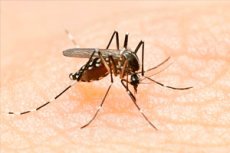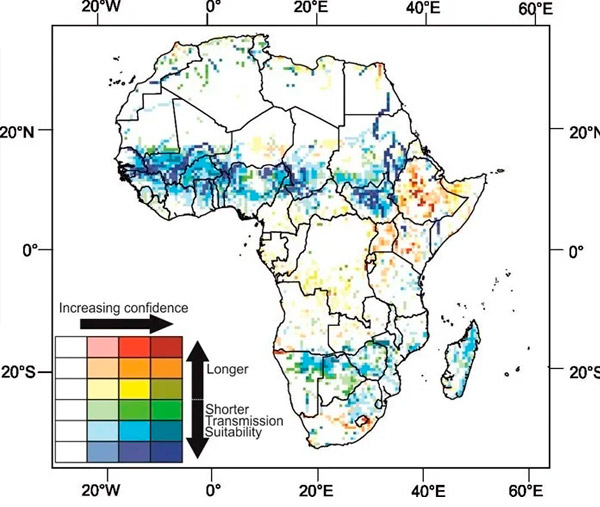New publications
New model predicts the impact of climate change on malaria transmission in Africa
Last reviewed: 02.07.2025

All iLive content is medically reviewed or fact checked to ensure as much factual accuracy as possible.
We have strict sourcing guidelines and only link to reputable media sites, academic research institutions and, whenever possible, medically peer reviewed studies. Note that the numbers in parentheses ([1], [2], etc.) are clickable links to these studies.
If you feel that any of our content is inaccurate, out-of-date, or otherwise questionable, please select it and press Ctrl + Enter.

A new model for predicting the impact of climate change on malaria transmission in Africa could lead to more targeted interventions to control the disease, according to a new study.
Previous methods used total rainfall to indicate the presence of surface water suitable for mosquito breeding, but the study, led by the University of Leeds, used multiple climate and hydrological models to account for the real processes of evaporation, infiltration and flow through rivers.
This breakthrough approach has created a deeper understanding of the conditions favourable to malaria on the African continent.

Projected changes in the length of the season suitable for malaria transmission by 2100 under a high emissions scenario. Red shades indicate increasing season length, while blue shades indicate decreasing season length. The intensity of the colouring indicates confidence in the estimates. Image credit: University of Leeds.
It also highlighted the role of waterways such as the Zambezi River in spreading the disease, with almost four times more people estimated to live in malaria-friendly areas for up to nine months a year than previously thought.
The study, titled "Future environmental suitability for malaria in Africa is sensitive to hydrology," was funded by the National Natural Resources Council and published May 9, 2024, in the journal Science.
Dr Mark Smith, associate professor of water sciences in the University of Leeds' Department of Geography and lead author of the study, said: "This will give us a more realistic assessment of where in Africa things will get better or worse for malaria.
"And as more detailed estimates of water flows become available, we can use this understanding to guide priorities and tailor malaria interventions in a more targeted and informed way. This is really useful given the often limited health resources."
Malaria is a climate-sensitive vector disease that caused 608,000 deaths among 249 million cases in 2022.
Ninety-five percent of global cases are reported in Africa, but the decline in cases there has slowed or even reversed in recent years, partly due to stagnant investment in the global response to malaria control.
Researchers predict that hot and dry conditions caused by climate change will lead to an overall reduction in areas suitable for malaria transmission starting in 2025.
The new hydrology-based approach also shows that changes in malaria suitability occur across locations and are more sensitive to future greenhouse gas emissions than previously thought.
For example, the projected decline in malaria suitability in West Africa is more extensive than rainfall-based models suggested, extending as far east as South Sudan, while the projected increase in Southern Africa is now thought to follow water courses such as the Orange River.
Co-author of the study, Professor Chris Thomas, from the University of Lincoln, said: "A key advance is that these models take into account that not all water stays where it rains, meaning that breeding conditions suitable for malaria mosquitoes may also be more widespread - particularly along major river floodplains in the dry savannah regions that characterise many parts of Africa.
"What's surprising about the new modelling is the sensitivity of the length of the season to climate change - this could have dramatic implications for the amount of disease transmitted," said Simon Gosling, professor of climate risk and environmental modelling at the University of Nottingham, who co-authored the study and helped coordinate the water modelling experiments used in the research.
Our study highlights the complex way in which changes in surface water flows are altering the risk of malaria transmission across Africa, made possible by a major scientific programme undertaken by the global hydrological modelling community to compile and provide assessments of the impacts of climate change on water flows across the planet.
While the overall reduction in future malaria risk may sound like good news, it comes at the cost of reduced water availability and a greater risk of another significant disease, dengue.
